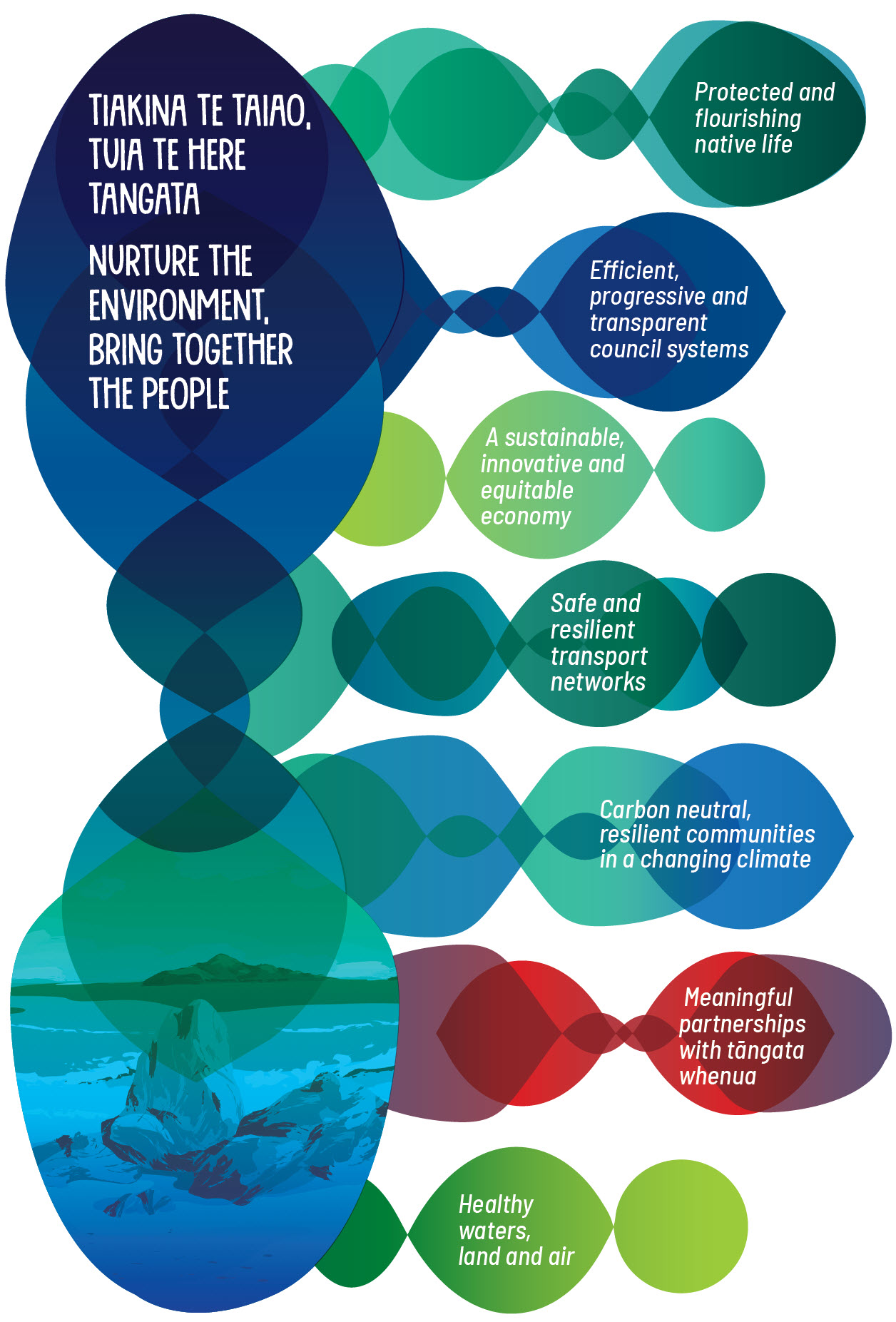Te Mahere Roa | Long Term Plan 2024-2034
Our Long Term Plan is our strategic document that guides what we want to achieve over the next 10 years and beyond, and how we’re going to pay for that mahi.
Like all councils around Aotearoa, we’re required to produce a new plan every three years. Council adopted the Long Term Plan 2024-2034 on 25 June 2024.
We’ll also be making an annual plan, that covers just one year in detail and sets out any changes from our long term plan for that year, in 2025 and 2026.
While most changes can be addressed via Annual Plan processes, there are some circumstances where changes can only be made via an amendment to our Long Term Plan. One of these circumstances is where a council proposes a change to the ownership or control of a strategic asset.
Our proposal to change the structure of our investments in Marsden Maritime Holding and Northport required us to amend our Long Term Plan 2024-2034 and the way that this strategic asset is reflected in it. Council adopted the Amended Long Term Plan 2024-2034 on 22 April 2025.
You can read more about this amendment in the Amended Long Term Plan 2024-2025 below.
We want a strong future for Te Taitokerau, with healthy wai, resilient communities in the climate crisis, and where whānau and whenua flourish. Our new plan provides funding to help us work toward this, with significant new work particularly in our climate action, biosecurity, flood management, Te Tiriti Partnerships, and support services areas.
It also continues the collection of targeted rates to provide funding for emergency rescue services and sporting facilities, as a service to the community.
Rates will be increasing to support all of this work. In the first year of this plan, that means an increase of 15.94% or $81.20 per annual rates bill on average. This drops to 5.79% in the second year (2025/26) and 4.04% by the third year (2026/27).
More detail on rate increases can be found in the financial assumptions on page 128 of the final plan, linked below.
Our rates brochure has more detail on the rates we strike and what they pay for, or if you like details, you can read the rates section of the plan from page 78.

Council prescribes user fees and charges to recover all or some of the costs associated with individuals using public resources. These fees are set under legislation, and are reviewed and updated annually.
We updated these through a process of review and consultation alongside the long term plan. You can read the final user fees and charges document here:
Our first consultation period ran from 16 March – 19 April 2024. We asked what you thought about the work we were proposing for environmental management, community resilience and regional leadership, and also, whether we should continue funding for emergency rescue services and sporting facilities.
We asked whether we should fund the high priority work we need to do now, or just do the bare minimum.
We received a huge amount of interest in our consultation, and received almost 2,300 submissions, with a clear message to continue funding contributions to emergency services and also support for funding regional sporting facilities.
We also held a number of hui and information sessions throughout the feedback period, so people could talk to councillors and staff about our proposals.
Our Summary of feedback document (PDF 3.79 MB) outlines the feedback we received.
Read the consultation material here:
- Consultation document (the key document to read) (PDF 5.4 MB)
- Consultation - Supporting information document (if you’re keen for more detail) (PDF 14.92 MB)
- Draft User fees and charges (PDF 938 KB)
- Submissions policy
- Statement of proposal: draft Revenue and financing policy (PDF 169 KB)
- Statement of proposal: draft Financial contributions policy (DOCX 264 KB)
- Statement of proposal: draft Policy on Te Tiriti Partnerships with Māori (PDF 174 KB)
- Statement of proposal: draft Significance and engagement policy (PDF 145 KB)
- Statement of proposal: draft Rates remission and postponement policies (PDF 236 KB)
We ran a further consultation period from 26 February to 28 March 2025 where we asked you about a change that brought full control of Northport under a single ownership umbrella, via a new joint-venture company - Northport Group Limited - combining Marsden Maritime Holdings (MMH) and Northport.
We received 42 submissions on this proposal, with the majority in general support. We also met with iwi and hapū during this process.
Our Amended Long Term Plan 2024-2034 summary of feedback (PDF 5.34 MB) includes all feedback received.
Read the Amended Long Term Plan consultation material:
